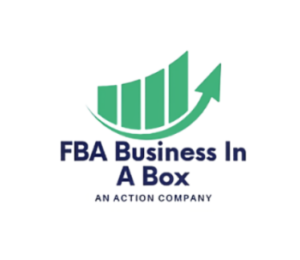Ecommerce Startup Action Guide
Comprehensive step-by-step instructions for all 36 essential tasks to launch your ecommerce business in the USA
1. Market Research & Validation
2-4 weeks
Step-by-Step Actions
Define Target Market
Identify demographics, psychographics, and buying behaviors of your ideal customers
Analyze Competitors
Research direct and indirect competitors, their pricing, products, and marketing strategies
Conduct Surveys
Create and distribute surveys to potential customers to validate demand
Test MVP Concept
Create a minimum viable product or prototype to test market response
Analyze Market Size
Calculate total addressable market (TAM) and serviceable addressable market (SAM)
Resources & Tools
Required Tools:
-
- Google Forms or SurveyMonkey
- SEMrush or Ahrefs for competitor analysis
Google Trends and Google Keyword Planner
- Facebook Audience Insights
Success Criteria:
- Clear target customer profile
- Competitive analysis report
- Survey responses from 50+ potential customers
- Market size estimation
Pro Tips:
- Use multiple research methods for validation
- Focus groups provide deeper insights
- Monitor social media conversations
2. Business Plan Development
1-2 weeks
Step-by-Step Actions
Executive Summary
Write a compelling 1-2 page overview of your business concept and goals
Market Analysis
Document your market research findings and target audience analysis
Financial Projections
Create 3-year revenue, expense, and cash flow projections
Marketing Strategy
Define your brand positioning, pricing, and promotional strategies
Operations Plan
Outline your supply chain, fulfillment, and day-to-day operations
Resources & Tools
Required Tools:
- Microsoft Word or Google Docs
- Excel or Google Sheets for financials
- SCORE business plan template
- LivePlan or Bizplan software
Success Criteria:
- Complete 15-20 page business plan
- Detailed financial projections
- Clear go-to-market strategy
- Risk assessment and mitigation plans
Pro Tips:
- Keep it realistic and data-driven
- Update regularly as you learn more
- Get feedback from mentors or advisors
3. Choose Business Model
1 week
Step-by-Step Actions
Evaluate B2B vs B2C
Determine whether you’ll sell to businesses or consumers based on your product and market
Consider Dropshipping
Assess if dropshipping fits your risk tolerance and profit margin requirements
Analyze Private Label
Research private labeling opportunities for higher margins and brand control
Explore Wholesale Options
Investigate wholesale purchasing for inventory-based models
Select Final Model
Choose the model that best aligns with your resources, goals, and market opportunity
Business Model Options
Dropshipping
Low startup costs, no inventory management
Cons: Lower margins, less control
Private Label
Your brand on manufacturer’s products
Cons: Higher investment, inventory risk
Wholesale
Buy products in bulk from manufacturers
Cons: Inventory investment, storage needs
Decision Framework:
- Consider your available capital
- Evaluate your risk tolerance
- Think about long-term scalability
4. Choose Business Entity Type
1 week
Step-by-Step Actions
Research Entity Types
Study LLC, Corporation, Partnership, and Sole Proprietorship options
Consider Tax Implications
Analyze tax benefits and obligations for each entity type
Evaluate Liability Protection
Assess personal asset protection offered by each structure
Consult Professional
Meet with attorney or accountant for personalized advice
Make Final Decision
Select entity type that best fits your situation and goals
Entity Comparison
LLC (Recommended for most)
- ✓ Personal liability protection
- ✓ Tax flexibility
- ✓ Simple management structure
- ✓ Credibility with customers
Corporation
- ✓ Strong liability protection
- ✓ Easier to raise capital
- ✗ Double taxation (C-Corp)
- ✗ More complex management
Sole Proprietorship
- ✓ Simplest to set up
- ✓ Full control
- ✗ No liability protection
- ✗ Limited credibility
Key Considerations:
- Liability protection needs
- Tax optimization strategies
- Future investor/partner plans
16. Domain & Hosting Setup
1-2 days
Step-by-Step Actions
Brainstorm Domain Names
Create list of brandable, memorable domain names related to your business
Check Availability
Use domain registrars to check availability and secure .com if possible
Purchase Domain
Register domain for 2+ years and enable privacy protection
Select Hosting Provider
Choose reliable hosting with good uptime, speed, and ecommerce support
Configure DNS
Point domain to hosting provider and set up email accounts
Recommended Providers
Domain Registrars:
- Namecheap (affordable, good interface)
- GoDaddy (popular, many features)
- Google Domains (clean, integrated)
Hosting Providers:
- SiteGround (excellent support)
- Bluehost (WordPress optimized)
- AWS/DigitalOcean (scalable)
Domain Best Practices:
- Keep it short and memorable
- Avoid hyphens and numbers
- Consider buying multiple extensions
5. Register Business Name
Register business name with state secretary of state office and check domain availability
Detailed action steps for this task would be displayed here…
6. Obtain EIN (Federal Tax ID)
Apply for Employer Identification Number from IRS for tax purposes
7. Business Licenses & Permits
Obtain required state and local business licenses, sales tax permits, and any industry-specific permits
